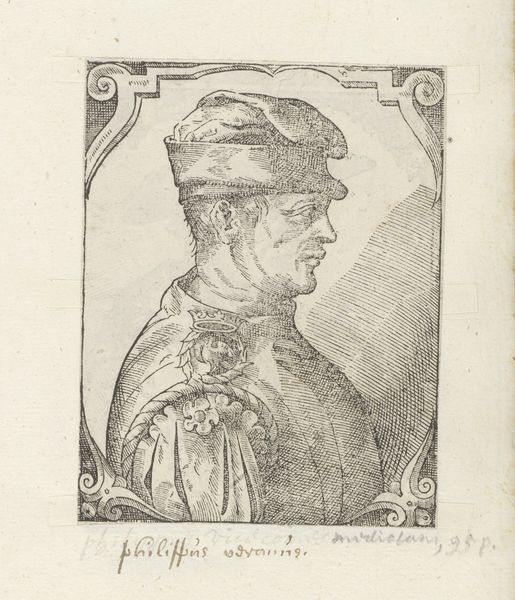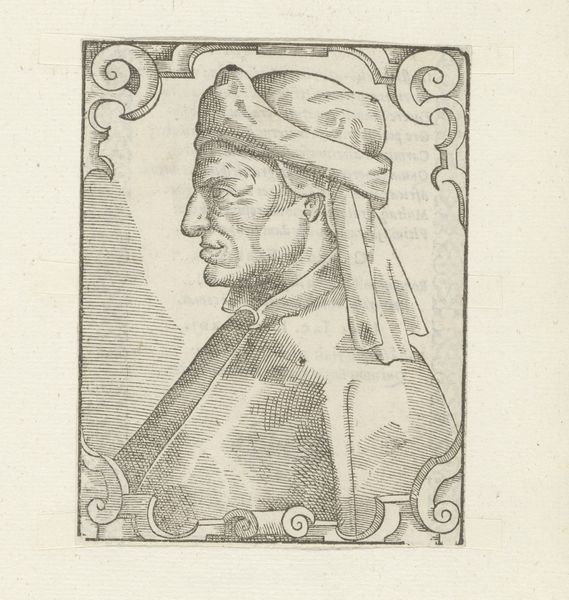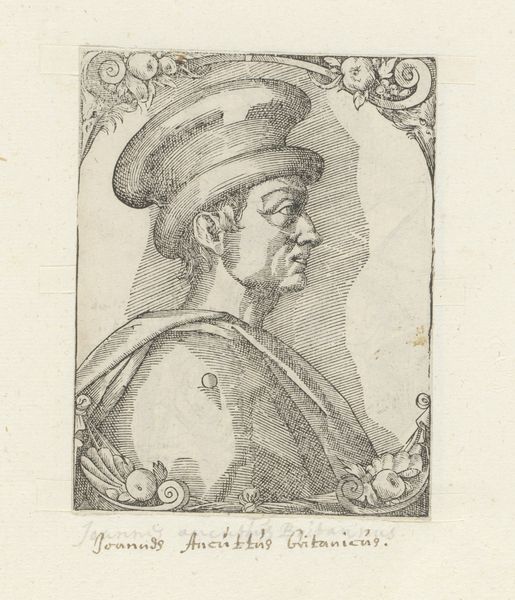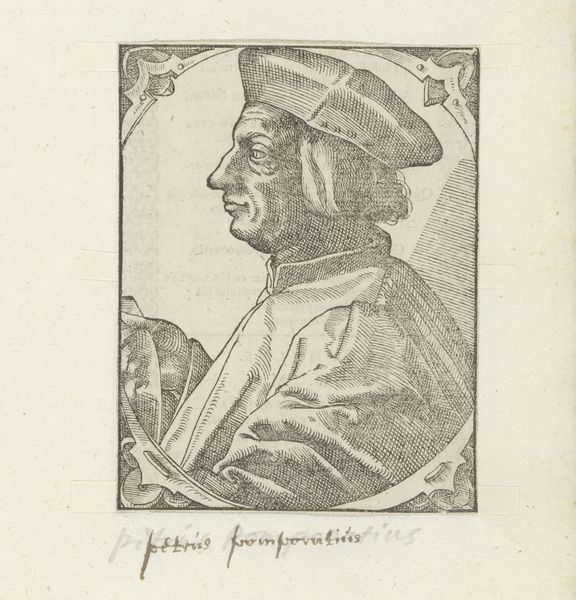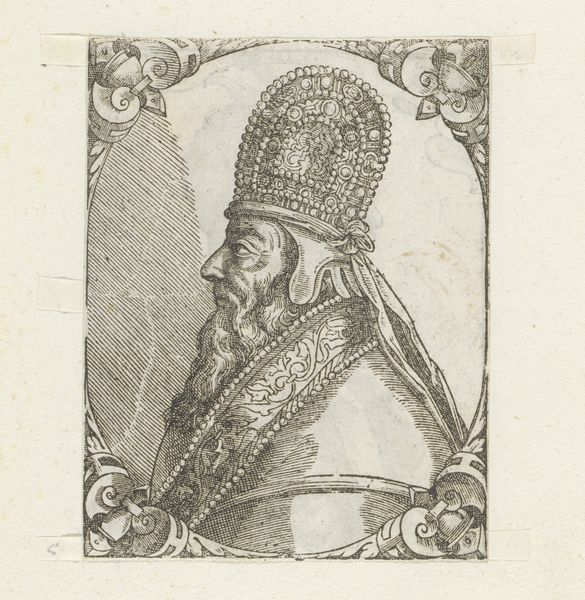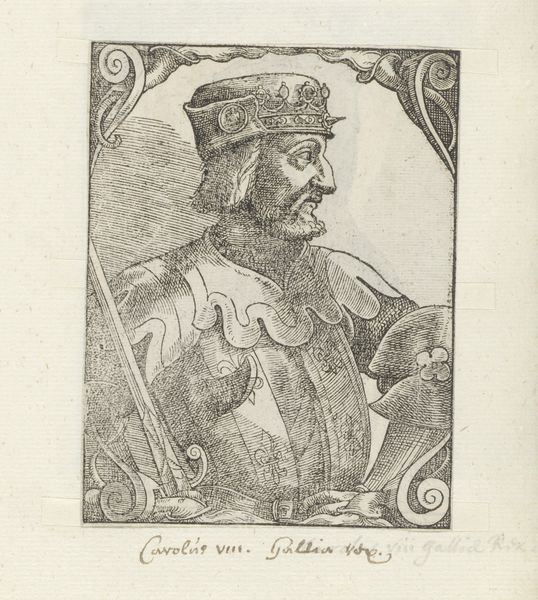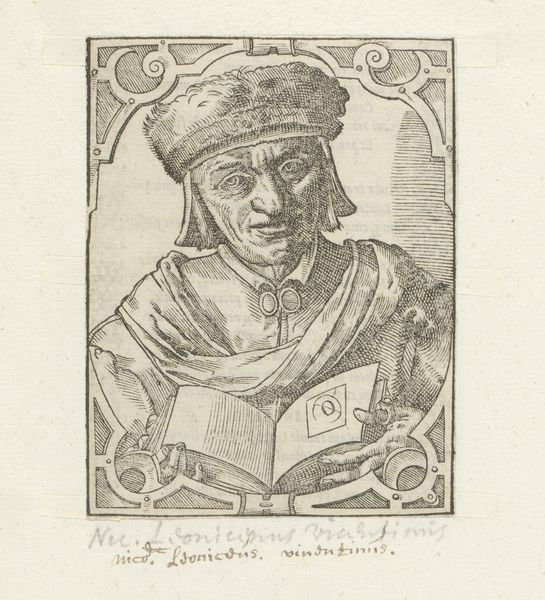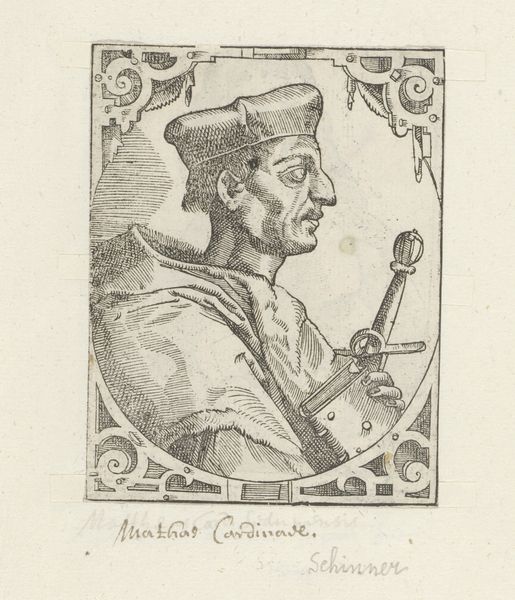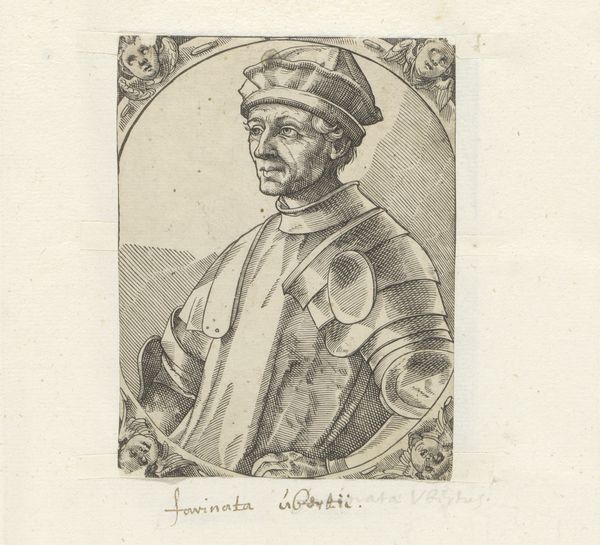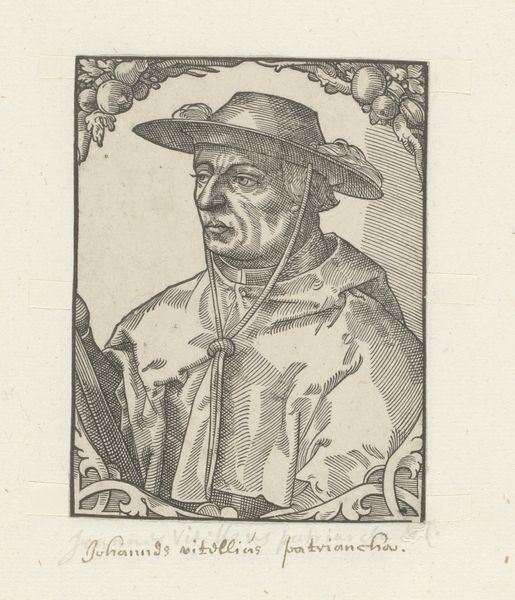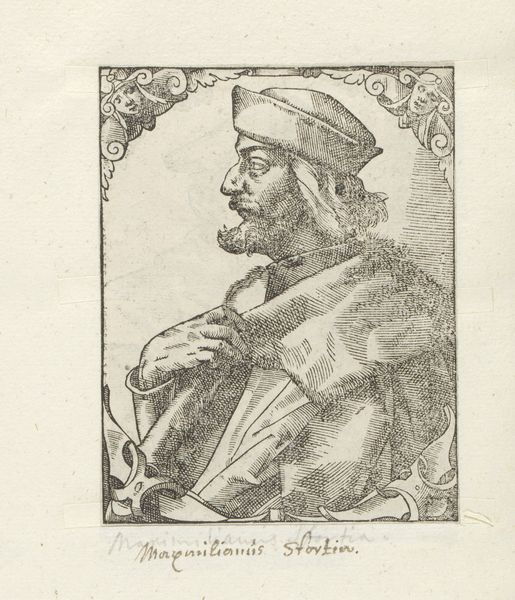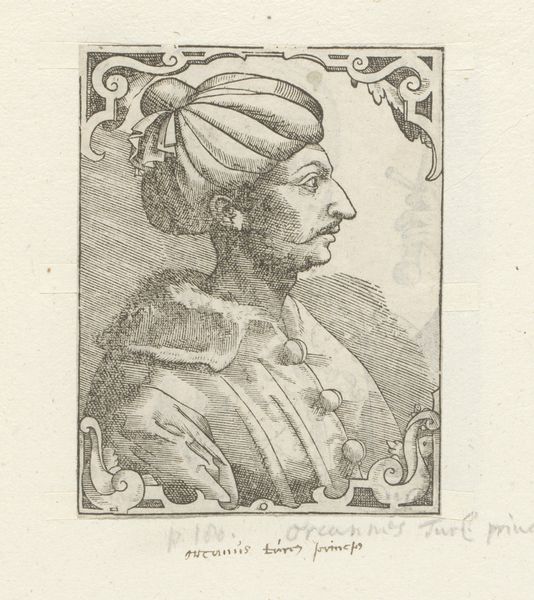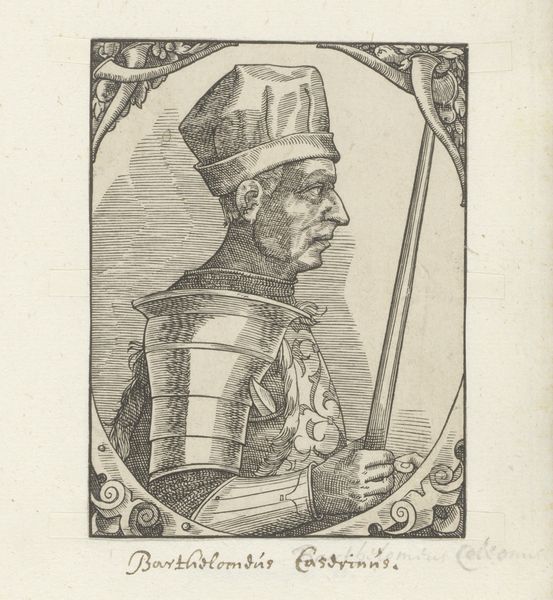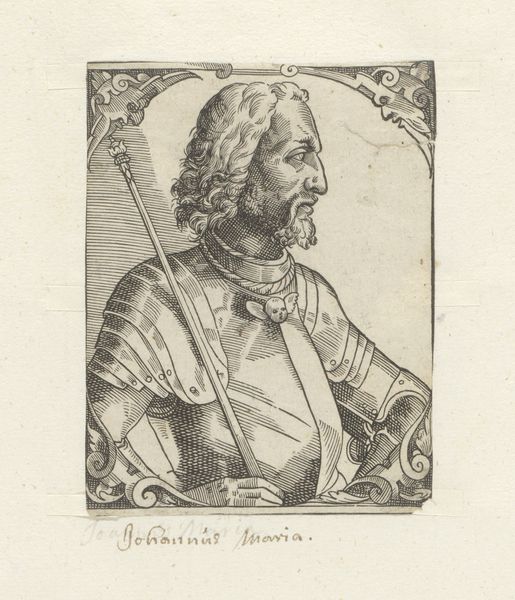
Dimensions: height 106 mm, width 83 mm
Copyright: Rijks Museum: Open Domain
Curator: Here we have a print dating sometime between 1549 and 1575, known as "Portret van Pyrrhus van Epirus"—or, in English, "Portrait of Pyrrhus of Epirus." It's rendered in a rather captivating old engraving style. Editor: It's definitely striking. I’m immediately drawn to the sitter's stoic expression and the incredible detail in the armor. There's a real sense of historical weight, wouldn't you agree? Curator: Absolutely. It’s interesting to consider the role prints like this played in disseminating images of historical figures. Pyrrhus was a Greek king and general known for his costly victories against Rome. His image, reproduced and circulated, shaped public perception of leadership and power. Editor: Exactly. The portrait exists not in a vacuum but in a network of sociopolitical motivations. The armour, for instance, speaks to a hyper-masculine ideal which then, as now, translates into specific expressions of power and the state. Curator: And this depiction seems to subtly engage with concepts of empire and cultural legacy. By choosing to represent Pyrrhus, the artist is actively positioning him within a specific historical and possibly political framework. Were they alluding to a form of contemporary socio-political strategy? Editor: Perhaps a cautionary tale or, equally, the print served as a reminder of Greek brilliance. Think about its impact on viewers then, considering the era's conflicts and aspirations, as they saw their own place within this historical tapestry. Curator: The baroque-ish detailing feels intriguing as well, framing as it does someone from classical history. In terms of its time, there may have been real engagement with antiquity going on, of which this engraving provides tangible evidence. Editor: Right, and through that interplay of technique and subject matter, it compels us to look at the relationships between past and present. It makes you ponder the enduring themes of leadership, conflict, and how we represent the powerful throughout history. Curator: Agreed. It makes this small print into quite a multi-layered document. Editor: Yes, this glimpse into the past certainly ignites a dialogue with our present.
Comments
No comments
Be the first to comment and join the conversation on the ultimate creative platform.
